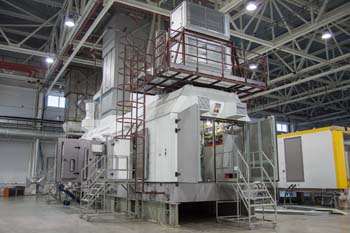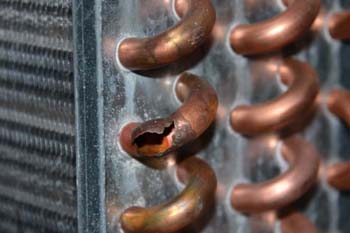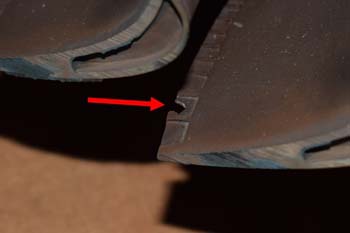A 50-megawatt natural gas turbine generator failed when freeze damage to the inlet-air cooling coils allowed water to flow into the turbine while it was running. The generator was part of new a central utility plant at a federal government campus in the Washington, D.C. area. The construction project was nearing completion at the time of the incident. There were numerous contractors and subcontractors working with the generator and related systems at the time of the incident. The EIS engineer assigned to the project was tasked with determining the role weather had in the failure, as well as understanding if the involved parties exercised due care in operating the subject equipment.

Inlet-air cooling coils are used to reduce the temperature of the combustion air entering a turbine. Reducing the inlet-air temperature can increase the efficiency of a turbine during the warmer months of the year, but is not necessary in the winter months when outdoor temperatures are already low.
Review of the documented operational procedures for the turbine revealed that the inlet-air cooling coils were supposed to have been drained and winterized prior to the onset of freezing temperatures. Project documentation showed that winterization of the coils was performed in the Fall, prior to the first forecasted freezing temperatures.
The building management system (BMS) used to control the turbine and other related systems was equipped with numerous control points and sensors that recorded data which was stored in the BMS computer system. The recorded data showed that, subsequent to the winterization of the turbine, there were two additional cold spells wherein the temperature of the air entering the turbine was sub-freezing.


